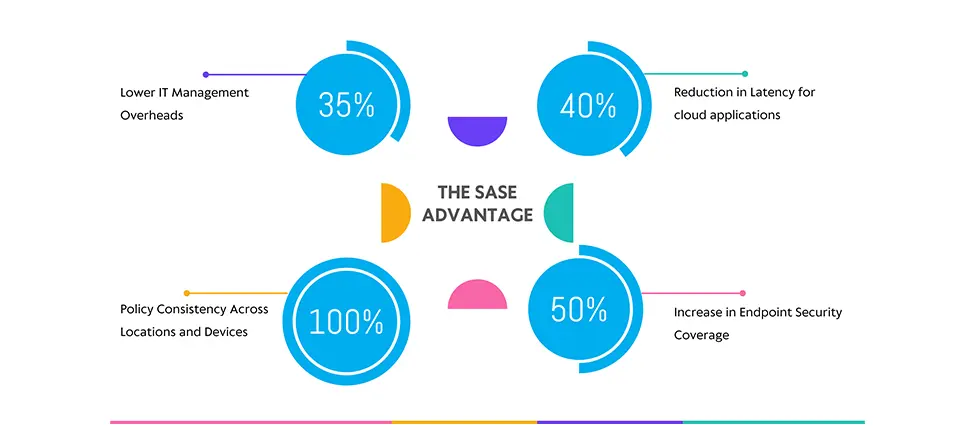Updated: Jan 28, 2025

Once upon a time, networking and cybersecurity lived in separate worlds. Networks were about connections, and cybersecurity was about walls. Though clumsily, this division worked in a world where businesses moved steadily and threats were straightforward. But then came the explosion of cloud computing, the rise of remote work, and an avalanche of devices connecting from anywhere and everywhere. Suddenly, this separation seemed not just inefficient but downright dangerous.
Enter Secure Access Service Edge (SASE), a framework that’s breaking boundaries and rewriting the rules of secure networking in IT. Imagine a system where connectivity and security are no longer parallel paths but a seamless highway—built for speed, scalability, and safety.
At its core, SASE combines wide-area networking (WAN) and secure networking into a unified, cloud-delivered service. Gartner coined the term in 2019, predicting that 60% of enterprises will adopt SASE by 2025. But what makes SASE revolutionary isn’t just its cloud-first approach; it’s the fact that it eliminates the patchwork quilt of hardware, software, and policies enterprises have been juggling for decades.
Scenario 1: Protecting the Remote Workforce
Picture an employee working from a co-working space. They connect to the company’s cloud apps through a public Wi-Fi network. In a non-SASE world, this scenario is a security nightmare. With SASE, however, the employee’s connection is encrypted, authenticated through ZTNA, and monitored in real-time for anomalies. The result? A seamless, secure experience.
Scenario 2: Enabling Faster Cloud Access
An MNC with offices in 20 countries struggles with latency and inconsistent security policies across locations. Deploying SASE resolves these issues. SD-WAN optimises traffic routing for faster access to cloud services, while FWaaS and CASB enforce uniform security measures globally.
Case Study: A Global Retail Giant
Faced with the dual challenges of rapid global expansion and increasing cyber threats, a retail powerhouse adopted SASE to streamline its operations. By implementing SD-WAN and ZTNA, the company reduced latency for its cloud-based inventory systems by 40% while eliminating data breaches across its 3,000 stores. IT management overheads dropped by 30%, freeing teams to focus on innovation.
Case Study: A Healthcare Provider
When a healthcare network experienced a ransomware attack, it turned to SASE to rebuild its infrastructure. By integrating CASB and FWaaS, the provider ensured compliance with HIPAA while safeguarding patient data. The outcome? Zero breaches in two years and a 25% improvement in operational efficiency.
The Future of IT is Here
SASE isn’t just a framework; it’s the future of secure networking. It’s about reimagining connectivity and security as two sides of the same coin. In a world where the edge is everywhere and threats are constant, SASE offers the agility and resilience enterprises need to thrive.
At Proactive Data Systems, we understand that every enterprise’s journey to SASE is unique. As a trusted partner, we help businesses navigate the complexities of adoption, from selecting the right tools to ensuring seamless deployment. With a proven track record in secure networking innovation, we’re here to future-proof your IT infrastructure.
Ready to redefine your network and security strategy? Let’s make it happen. Contact us today.